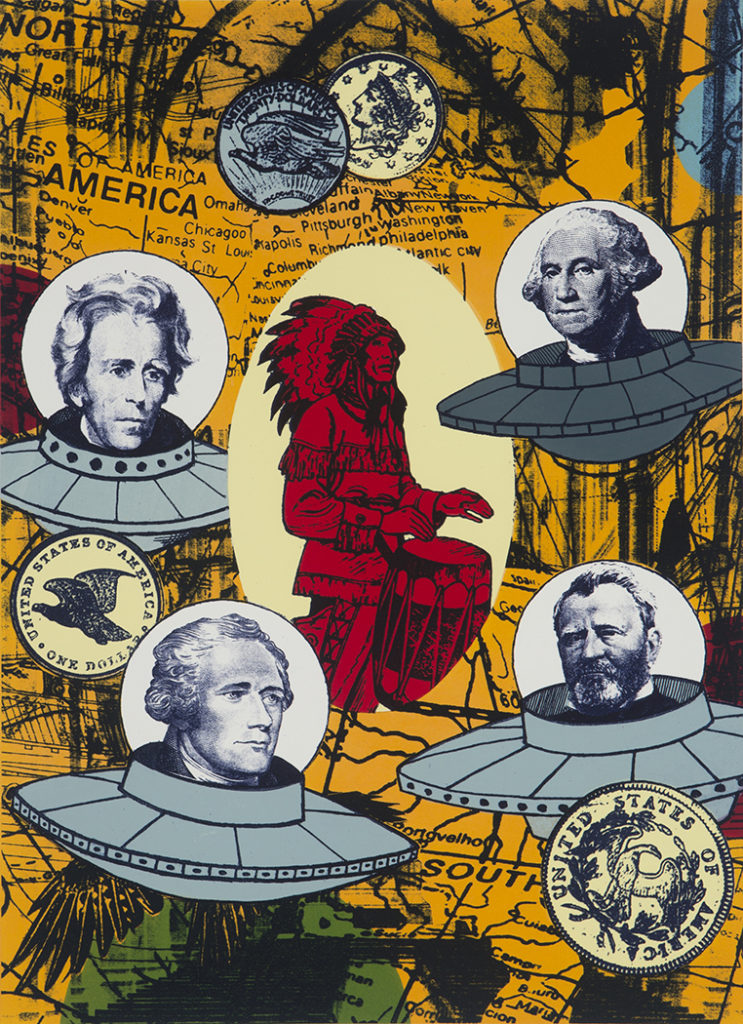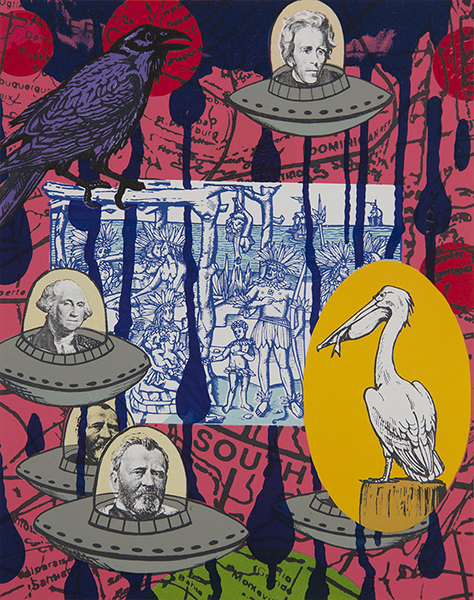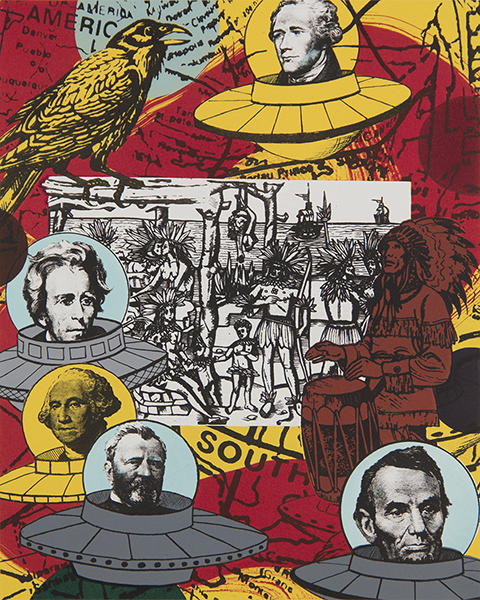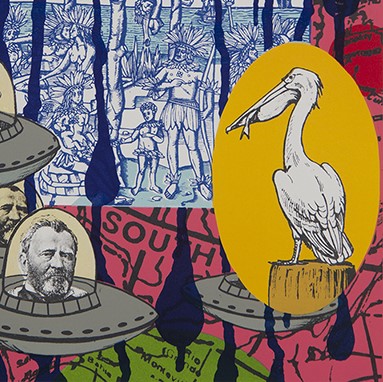I took title for the PACE Center exhibit, Allegories of Transformation, from an essay Norman Akers wrote. The full quote is:
The use of narrative in my work acts as a continuation of the Native American storytelling tradition. Ancestral tribal stories and sayings explained the world in which we lived. New and emerging stories serve as allegories of transformation in an ever-changing world.

Norman is Osage and teaches at University of Kansas. Throughout our conversation, two clear ideas remained ever-present: where he finds himself in the land is directly influenced by his deep sense of home. And, as an Osage, he is constantly looking to the future; the idea of looking back in time and painting that version of reality is an anathema to Norman.

It was interesting to dig into this idea of home, especially with someone like Norman whose ancestors have had a very different experience with the concept, from being migratory to being removed from their lands. For Norman, home is a vast place that reaches from the prairie lands his ancestors roamed and hunted t, the small town he grew up in. His sense of home, then, is not necessarily attached to specific objects–a mailbox, an easy chair, pots and pans in a kitchen, but is instead a more conceptual idea with a broader reach.

And, being forward facing, there is an optimism Norman brings to his work. He was, early on, a plein air painter. He still considers himself to be a painter of landscapes but these landscapes are the interior spaces in his mind, his heart and his soul. The paintings and print work he does now sheds light on his travels and speaks to his ancestors, but is decidedly contemporary in every way possible from subject matter to technique. His work truly embodies the notion of allegories and how important they are to tell stories and help society through vital and ongoing transformations.
To learn more about the Allegories of Transformation exhibition, please go to PACE Center.
